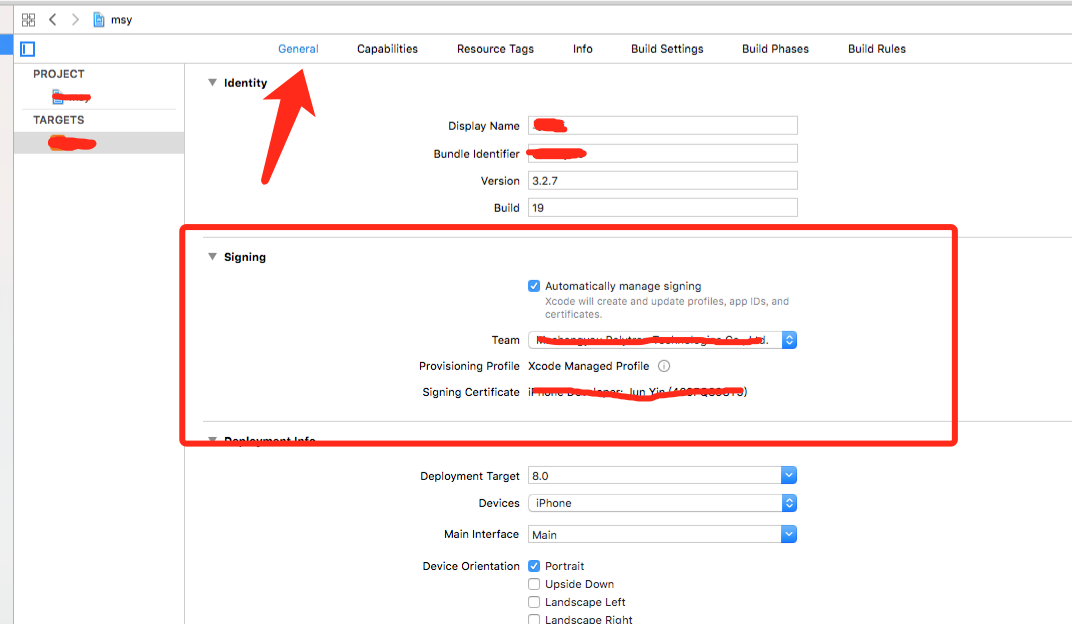参考资料:
delete在c++里的用法。http://en.cppreference.com/w/cpp/memory/new/operator_new
http://en.cppreference.com/w/cpp/memory/new/operator_delete
http://www.wuzesheng.com/?p=840
http://www.blogjava.net/bacoo/archive/2008/07/13/214612.html
#include <cstdio> #include <cstdlib>void * operator new(size_t unSize) {printf("operator new called\n");return malloc(unSize); } void * operator new[](size_t unSize) {printf("operator [] called\n");return malloc(unSize); }void * operator new(size_t unSize, int nLine, const char * pFunc) {printf("operator new called, line: %d, func: %s\n",nLine, pFunc);return malloc(unSize); } //注意:c++14才支持全局delete或delete【】有多个参数,参看参考资料2.下面两个delete不会覆盖全局的。 void operator delete(void * pMem,size_t unSize) {printf("delete1: %u\n", unSize);free(pMem); } void operator delete[](void * pMem, size_t unSize) {printf("delete[]: %u\n", unSize);free(pMem);}class A { public:A(int a = 0) :_a(a){ printf("constructor called\n");} virtual ~A(){printf("~A()\n");}void * operator new(size_t unSize){printf(" calledA\n");return malloc(unSize);} //注意:但是支持自定义类型操作符new或delete重载支持size_t参数。即要删除对象的大小delete,要删除对象数组大小delete[].。
void operator delete(void * pMem, size_t unSize){printf("delete2: %u\n", unSize);free(pMem);}void operator delete[](void * pMem, size_t unSize){printf("delete[]: %u\n", unSize);free(pMem);}private:int _a; };class B: public A { public://隐式的为静态函数。void * operator new(size_t unSize, int nLine, const char * pFunc){printf("operator new called, line: %d, fileB: %s\n",nLine, pFunc);printf("operator new: %u\n", unSize);//_b=0;return malloc(unSize);}~B(){printf("~B()\n");}int _b;int _bb; };int main() {A * pA = new A(10);printf("#######\n");A * pB = new (__LINE__, __FILE__) B();printf("#######\n");A * szA = new A[10];B *szB = new B[10];printf("#######\n");delete pA; printf("#######\n");delete pB; printf("#######\n");delete [] szA;printf("#######\n");delete [] szB;printf("#######\n");
//下面两个不是自定义类,没有类重载new.delete故只能调用全局的,本程序全局不支持size_t参数,故只能调用标准C++中的全局operate delete.故不会打印信息。char * pC = new char[10];delete [] pC;
char *pu = NULL;
delete pu;
}
gcc下运行结果:
calledA constructor called ####### operator new called, operator new: 16 constructor called ####### operator [] called constructor called constructor called constructor called constructor called constructor called constructor called constructor called constructor called constructor called constructor called operator [] called constructor called constructor called constructor called constructor called constructor called constructor called constructor called constructor called constructor called constructor called ####### ~A() delete2: 8 ####### ~B() ~A() delete2: 16 ####### ~A() ~A() ~A() ~A() ~A() ~A() ~A() ~A() ~A() ~A() delete[]: 84//注意84=4+8*10,数组分配的堆空间,第一个int空间放数组个数,接下来顺序放对象
####### ~B() ~A() ~B() ~A() ~B() ~A() ~B() ~A() ~B() ~A() ~B() ~A() ~B() ~A() ~B() ~A() ~B() ~A() ~B() ~A() delete[]: 164####### operator [] called //调用覆盖的全局函数operate new [],打印信息。
//delete[]调用全局的。
说明:1 在vs中类中delete[]的size_t是8和16.不同编译器结果不同。理论上应该是数组大小*类型字节。
2 如果基类有virtual析构函数,则传给operator delete的大小讲个怒被删除指针所指对象的动态类型而变化,如果没有声明为virtual,那么通过基类指针删除指向派生类对象,大小为基类大小。
总结:
1 malloc只是C函数,内部应该是使用类似deepalloc等,主要功能是分配原始内存,返回void*类型,需要显示转换为对应对象 类型指针。没有调用对象构造函数。C中函数本来就没有类没有构造函数。
free释放回收堆空间。
2 C++中的new 和delete是操作符,A * pA = new A(10)分别调用下面两步:
先调用void * operator new(size_t unSize) (调用顺序:那个有就调用那个:类中重载了就调用类的,然后全局重载,最后是C++源码中的全局函数)分配原始内存,未初始化的。里面可以调用malloc或者类似deapalloc来分配内存。
在调用A的构造函数,用初始化参数初始化。
delete pA;也分两步:
先调用A析构函数;
在调用void operator delete(void * pMem)(调用顺序同上面operator new),释放内存。可调用free实现或者其他实现。
3 operator new,operator delete隐式静态函数,写不写static都是静态的。
为什么必须是静态的呢?因为他们要么在构造对象前使用要么在析构后使用。属于类的函数,不是对象的函数。
4 operator new中传入的大小是怎么获得的呢,我觉得类似于sizeof(类型名)
关于sizeof不需要实例对象,我觉得类为实例化编译器不会给成员变量分配空间,但应该有个地方放的声明,标明变量类型等。
还有,sizeof大小不包括静态成员变量,静态变量一般放在静态区,不属于对象。没有成员变量的类大小为1,有虚函数就要多4个字节(虚函数表指针)。
最后小结一下,new 和delete都是内建的操作符,语言本身所固定了,无法重新定制。但它所调用的内存分配/释放的函数,即operator new和operator delete可以被重载
ps:
从汇编代码可看出:对单个堆对象调用delete和对堆对象数组调用delete[]可以发现,两种情况最主要的差别是在调用析构代理函数时传递的对象首地址,用delete析构单个对象是传进的堆空间首地址(也是堆对象首地址),而用delete[]析构对象数组时传递的是偏移堆空间首地址4byte处内存地址(即堆空间中第一个对象首地址,前四个字节是个int型,放的数组大小,即对象个数)。因此,在释放单个对象时调用delete[],或者释放对象数组时调用delete,都会造成错误,应该配对使用。













